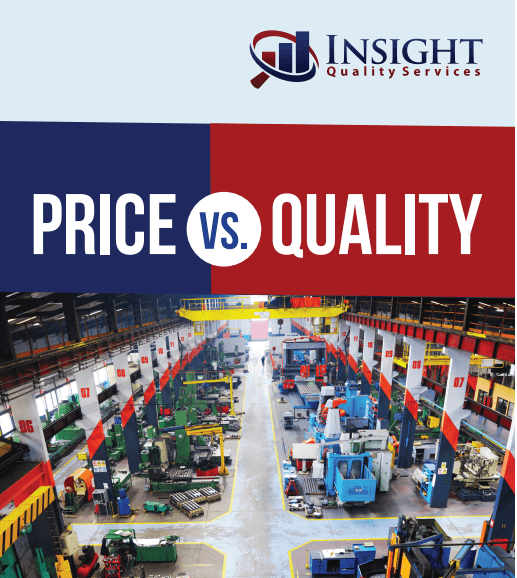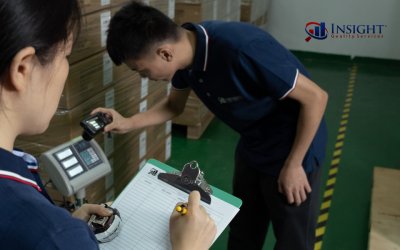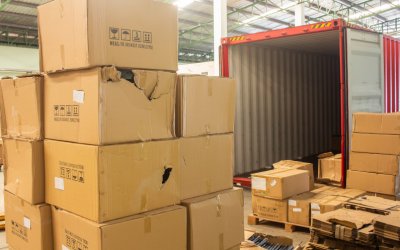It’s important to note, however, that by not hiring that third-party inspection services company, you’re taking a big risk.
In our recent article about quality control disasters, we shared some examples of manufacturing nightmares our customers experienced before working with us. These “disaster” examples highlight the fact that by not investing in proper quality control, you may end up eventually spending more money dealing with unexpected problems.
If you’re thinking about whether to invest in pre-shipment inspections, it’s helpful to consider a concept called the Cost of Poor Quality (or COPQ). This idea was popularized by H. James Harrington in his 1980’s book, Poor Quality Costs.
What is the Cost of Poor Quality (COPQ)?
The Cost of Poor Quality refers to the costs associated with providing poor quality products or services. According to the the American Society for Quality, COPQ consists of four parts:
#1 – Internal Failure Costs – Costs associated with defects before the customer receives your product. For example, if a product gets made incorrectly and it needs to be scrapped or reworked, costs would be incurred.
#2 – External Failure Costs – Costs associated with defects after the customer receives your product. For example, if a customer found a scratch across the front of the picture frame you sold them, you could incur costs replacing the item or dealing with customer complaints.
#3 – Appraisal Costs – Costs to determine the degree of conformance to quality standards. Pre-shipment inspection costs fall into this category.
#4 – Prevention Costs – Costs to minimize numbers 1 through 3. For example, paying for the time involved in developing quality standards, implementing quality systems, or doing quality planning all incur costs.
So, what does COPQ have to do with pre-shipment inspections?
Pre-shipment inspections incur appraisal costs. At the same time, they help you to limit failure costs. Let’s talk about why that is.
How do Pre-Shipment Inspections Prevent Failure Costs?
As you can see above, there are two types of failure costs, internal and external.
Let’s talk about internal failure first.
One time we had a customer that was making fire pits.
Before they worked with us, they had an episode where the fire pit cartons were not being stapled correctly at the factory. Because of this, when they received the cartons, they were falling apart and products were getting damaged.
The company had to bring in teams of people in the US to rework these units. This incurred tens of thousands of dollars worth of internal failure cost. If they had done a pre-shipment inspection, they could have avoided this. They would have incurred appraisal costs, but the amount would be minimal.
Let’s talk about external failure.
Let’s say you’re making plastic cups.
You specify that the cups are supposed to be blue. On the packaging, it says they’re blue, but when customers open up the boxes, they find the cups are actually red.
Now you need to replace all the red cups and you incur external failure costs dealing with customers and getting replacement cups to make them happy. Incurring the appraisal cost of an inspection would have helped you avoid spending this money and having dissatisfied customers.
You Can’t Always Avoid Failure, But You Can Catch it Earlier
It’s easy to look at the cost of a pre-shipment inspection and view it only as an expense, imagining that you’ll save money by not paying for it.
You might have confidence in your factory, and you might be betting on their ability to get things right. But, when it comes down it, you could be leaving yourself open to unforeseen failure costs.
A pre-shipment inspection helps give you more certainty about the quality of your products. Using industry standard methodologies, like acceptable quality limits (or AQLs), an inspection company can help make it much less likely that you’ll experience your own quality nightmare.
Remember that although inspections incur appraisal costs, they can also help you avoid often substantially higher failure costs.
In the end, that inspection you’re thinking about doing could help save you time and money.
Have more questions about pre-shipment inspections? Want to begin using Insight to conduct your inspections? Schedule a time to discuss your needs by making a free consultation appointment by clicking here.
Price vs. Quality: What You Need to Know
When you’re making products to sell in the marketplace, you have to consider the tradeoffs between price and quality. Sometimes, producing better quality products can lead to paying a higher price for manufacturing.
Download our free white paper, Price vs. Quality, to learn how to produce great quality while keeping your costs low.





0 Comments